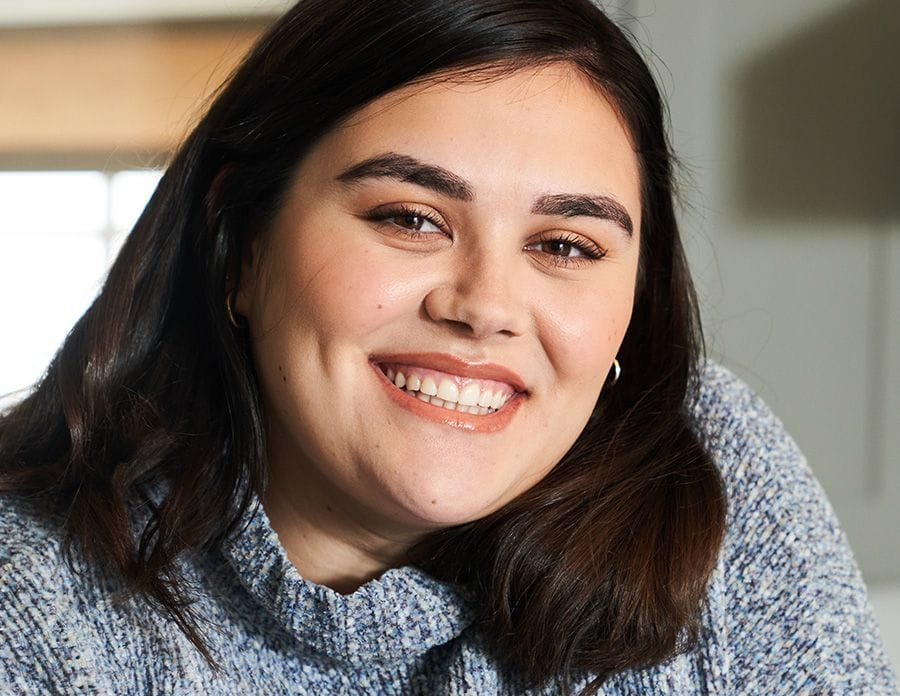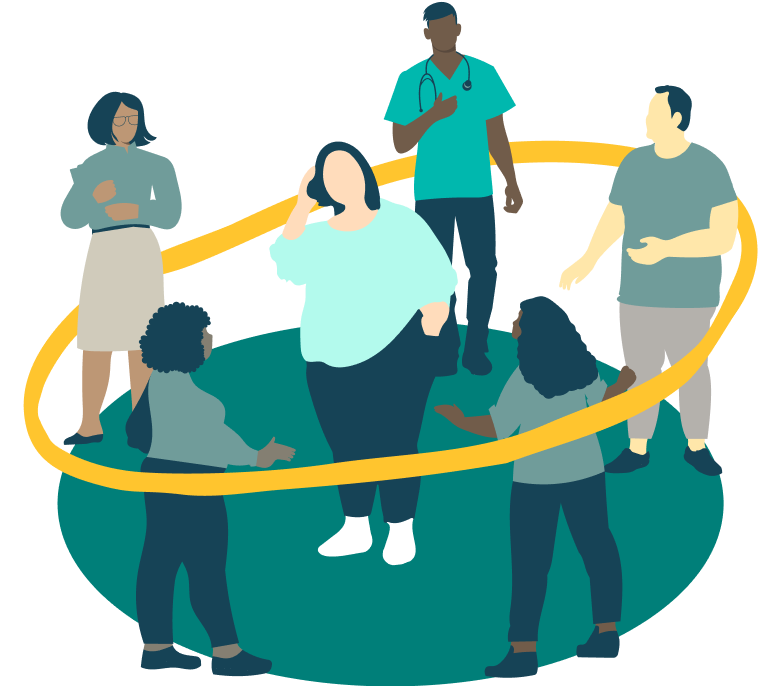
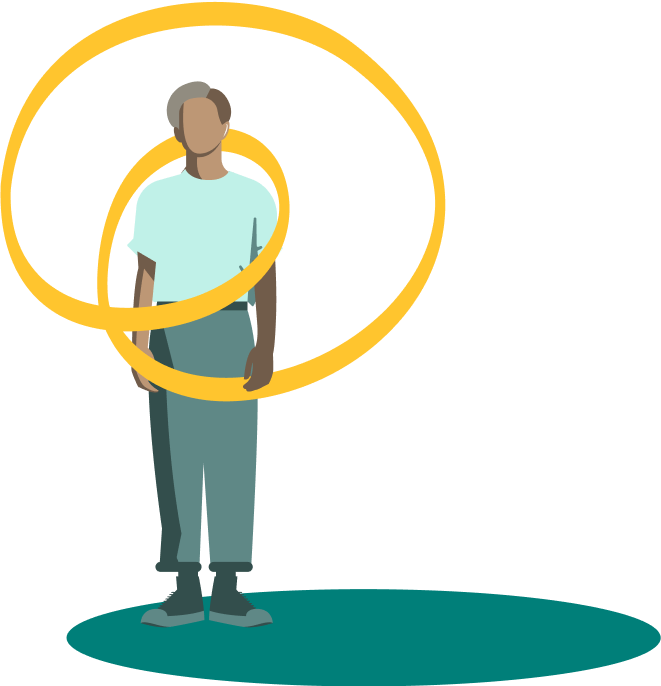
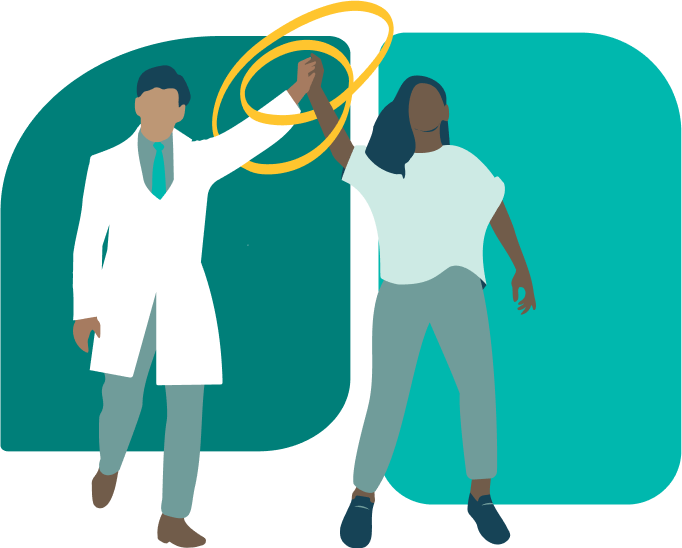
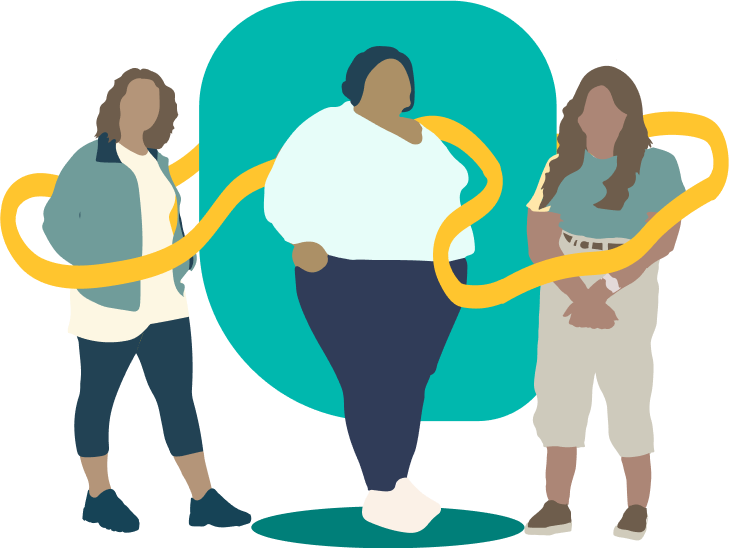

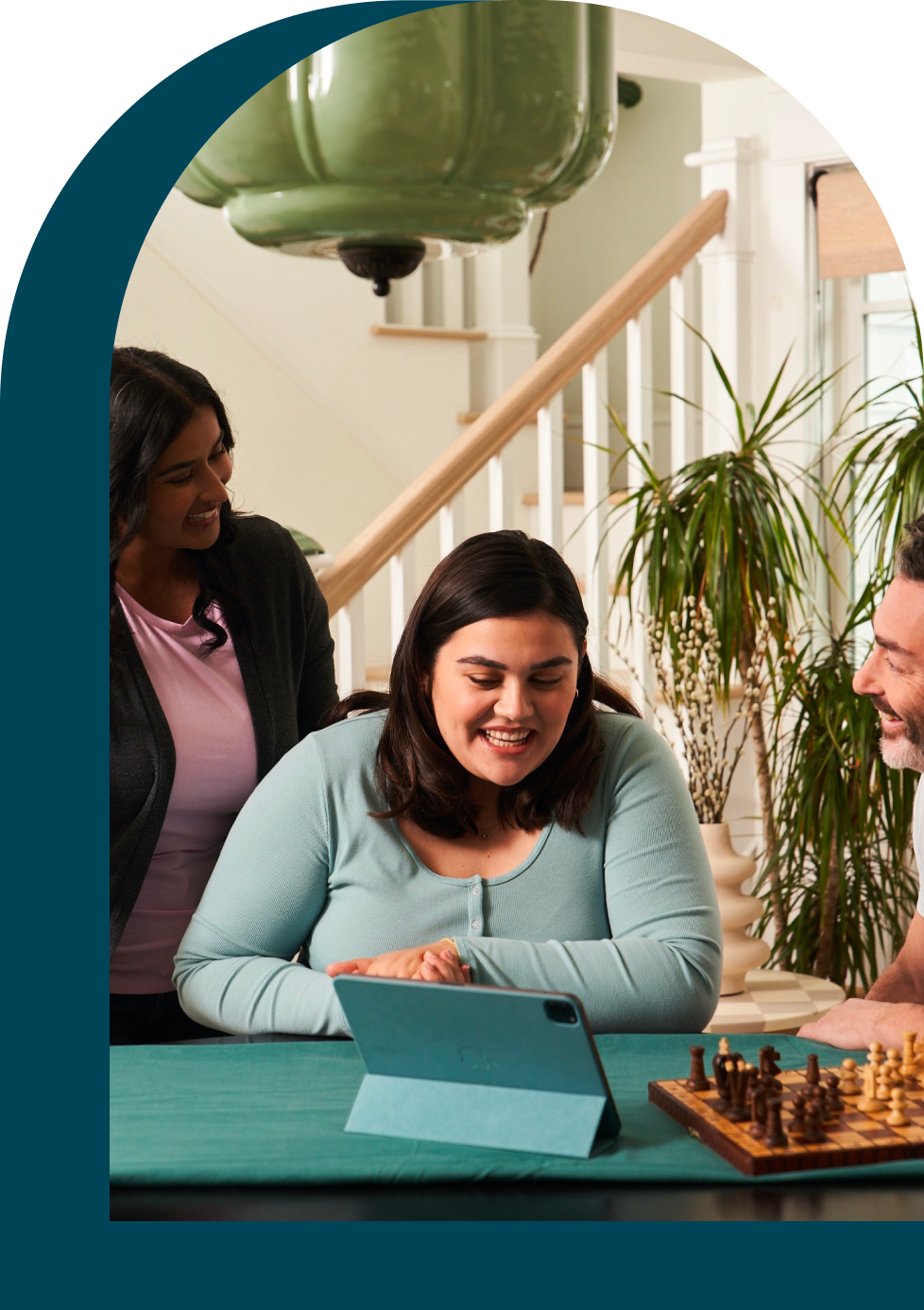
We tailor treatment to each patient using a variety of evidenced-based modalities, including: FBT, CBT-E and CBT-AR, DBT, ERP, and more. We also treat co-occurring conditions like mood disorders and anxiety when the time is right. During the admissions process, we’ll gather a lot of background on what behaviors are currently present, and your therapist will have an in-depth session with you to outline what your treatment plan will look like.
Research shows online eating disorder treatment is just as effective as in-person treatment. It also has many added benefits.
Virtual treatment improves a patient’s ability to achieve lasting recovery and is easier on the people supporting them. Neither the patient nor their loved ones need to uproot their lives, spend time commuting to and waiting in offices, or deprioritize other responsibilities.
Our virtual model integrates family (including chosen family), friends, and other supports into treatment. This allows the patient’s support network to be deeply involved in the day-to-day of treatment, giving healthy friends and family members the tools and knowledge they need to help their loved one toward recovery. Virtual treatment also lets patients develop coping skills in their real life—the only environment that truly matters for lasting recovery and relapse prevention.
Before a patient begins treatment at Equip, they are first cleared by a medical professional for medical stability. In cases where hospitalization is required, the patient can transition to Equip treatment after being discharged. This ensures it’s safe for you or your loved one to begin virtual treatment.
Once you or your loved one is medically stable, there’s no need for inpatient treatment. Equip treatment is appropriate for patients needing all levels of care (including residential treatment) except for those who are medically unstable. Our team educates and supports you every step of the way, empowering you to monitor weights and vitals at home as well as prepare and plate all food.
Unfortunately, it’s not uncommon for doctors to have little training in eating disorders, but they can still screen for an eating disorder with the right information. Our Providers page, which you can consider sharing with your doctor, provides comprehensive information including how to do a proper workup and assess for an eating disorder.
On average, it takes about 2-3 weeks for people to finish our admissions process. Your admissions specialist will review your specific situation and coordinate your admissions date with you.
Our founders created Equip’s comprehensive treatment model to fill the gaps they’d seen in existing treatment. Using their combined decades of both clinical and lived experience, they designed Equip to bring the most effective components of evidence-based treatment directly to patients and their support networks, and added in the extra care needed to achieve lasting recovery.
While we believe that support from those around you is helpful in recovery, we don’t require that you involve family or other supports. You can also start on your own, then work with your team to identify who might be a good support and determine the best way to involve them in treatment.
It makes sense that you want your loved one to be independent. But right now, they aren’t—they are controlled by their eating disorder. At this point, the healthy people in their life are their best asset for recovery. That’s why in the beginning, you will likely play a key part in your loved one’s recovery. As they progress through treatment, they’ll begin to gain freedom from their eating disorder, and can also begin to gain more independence on their recovery journey.
Our team will verify your insurance information before you start at Equip. If Equip is in-network with your insurance, you can expect your plan's copays or coinsurance. Throughout your time with Equip, our financial counselors are available to help with any questions or concerns related to your costs. If Equip is not in-network with your insurance, we offer a private pay option. A financial counselor will work with you directly to review costs and options such as HSA/FSA eligibility.
If you’re concerned your loved one may have an eating disorder, approach the conversation from a place of curiosity and compassion. Eating disorders are secretive illnesses and are often accompanied by feelings of shame. It’s important to avoid accusations or any implication they may be doing something “wrong.”
It’s often best to begin by asking an open-ended question, like, “I’ve noticed that your weight is changing. Can you tell me what you’re thinking/feeling?” or “It seems like you’ve been avoiding family dinners recently. Why do you think that is?” Don’t be discouraged if your first attempt at a conversation doesn’t unfold perfectly. Eating disorders work hard to protect themselves; continue to approach future conversations in the same way.
It’s also important to be aware of the language you use in front of your loved one, as common phrases can unintentionally send harmful messages. This means shifting the focus away from appearance whenever possible (their appearance, your appearance, and the appearance of others), and speaking positively or neutrally about bodies when they do come up.
It also means avoiding comments about food and exercise that imply judgment and the idea of “good” and “bad” choices, like:
- “Oh, I wish I could have a little of that. I have no self control around food.”
- “I have to go on a long run after work to make up for those cookies I ate at lunch.”
- “I did so much work in the yard today, I really earned this pizza.”
Learn more about how to talk to a loved one with an eating disorder on our blog.
With many patients—for instance, those doing dialectical behavioral therapy (DBT) or cognitive behavioral therapy for eating disorders (CBT-E)—we do use individual therapy right away. However, for young patients who are doing family-based treatment (FBT), we wait until the time is right. Regardless of the modality we’re using, restoring a patient’s nutrition is always the primary focus.
When the body is malnourished, the brain is, too. This is true of all eating disorder patients. A malnourished brain doesn’t think clearly or take in new information well. People who are malnourished are more likely to be depressed, anxious, and have trouble paying attention. Evidence shows that individual therapy isn’t effective in the early stages of eating disorder recovery when a patient is malnourished.
Because of this, the first step in Equip treatment is to normalize eating habits, restore nutrition, and gain weight (if needed). Then, we can shift the focus to individual therapy, using evidence-based interventions like DBT, CBT-E, exposure therapy, and others. As eating disorder symptoms improve and disappear, we can also shift the focus of therapy to other conditions the patient may have, like OCD, anxiety, and depression.
Throughout their time with Equip, patients also have access to groups and mentorship for ongoing validation, connection, and support.
We follow the American Psychiatric Association Practice Guidelines and the Society for Adolescent Health and Medicine factors to support hospitalization to determine if a patient may need to be hospitalized for medical stabilization. From the very outset, an Equip medical provider will work in conjunction with your outside primary care provider to determine medical status and coordinate hospitalization if it’s needed.
If you or your loved one does need inpatient stabilization, your Equip team will continue to coordinate with outside providers throughout hospitalization. This ensures that when it’s time for discharge, patients can seamlessly transition from inpatient hospitalization back into our care.
Our provider team includes trained and licensed therapists, medical providers, and dietitians, all of whom specialize in eating disorders, as well as certified mentors for both the patient and the people supporting them.
Every therapist is licensed (with licenses such as LCSW, LMFT, AMFT, and others) and has training in eating disorder treatment. Our medical providers are MDs (physicians, pediatricians, or psychiatrists), registered nurses, and nurse practitioners with training in eating disorders. Every dietitian has been licensed as an RD and has experience working with patients with eating disorders.
Our mentors are Equip employees who either have lived experience with an eating disorder (meaning they have recovered from an eating disorder themselves) or have helped a loved one recover from an eating disorder. Mentors also receive specialized mentorship training through Equip.
All Equip providers receive ongoing training and supervision.
You can use this assessment to understand key signs of eating disorders. If you’ve seen (or are experiencing) several of the behaviors listed in the assessment, we recommend getting a professional consultation. You can reach out to your primary care physician, or schedule a consultation with Equip.
Eating disorders are sneaky and behaviors often occur in private. If you’re concerned about a loved one but can’t pinpoint specific behaviors, continue to pay attention and consider voicing your concerns to them in a curious, compassionate way. Learn some tips for talking to a loved one about an eating disorder.

